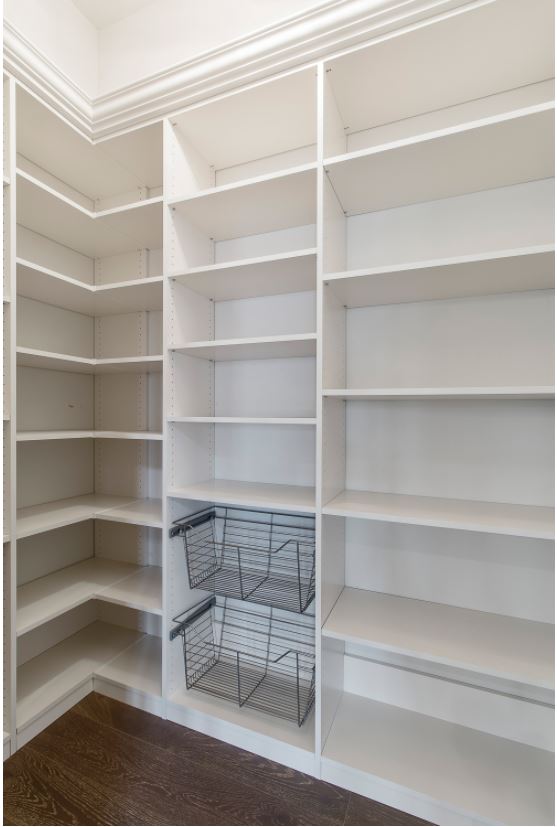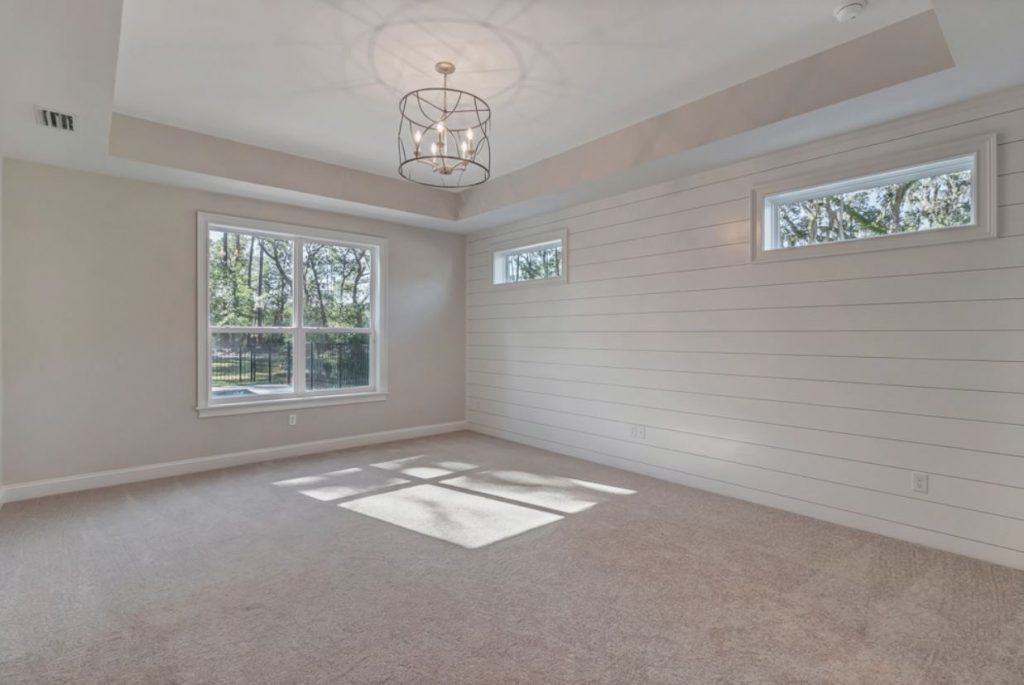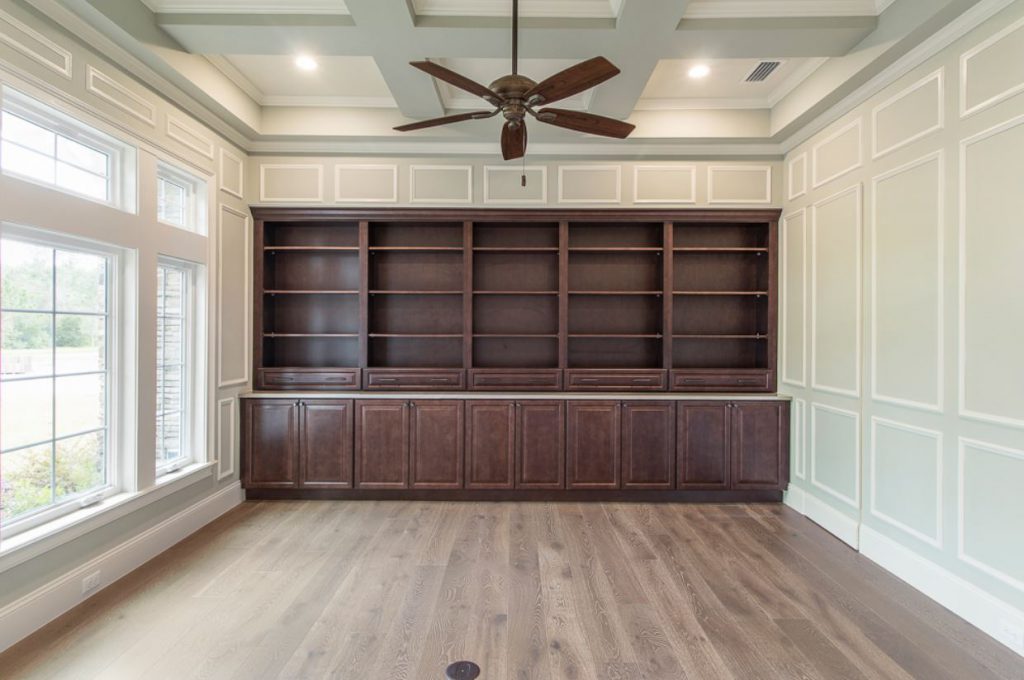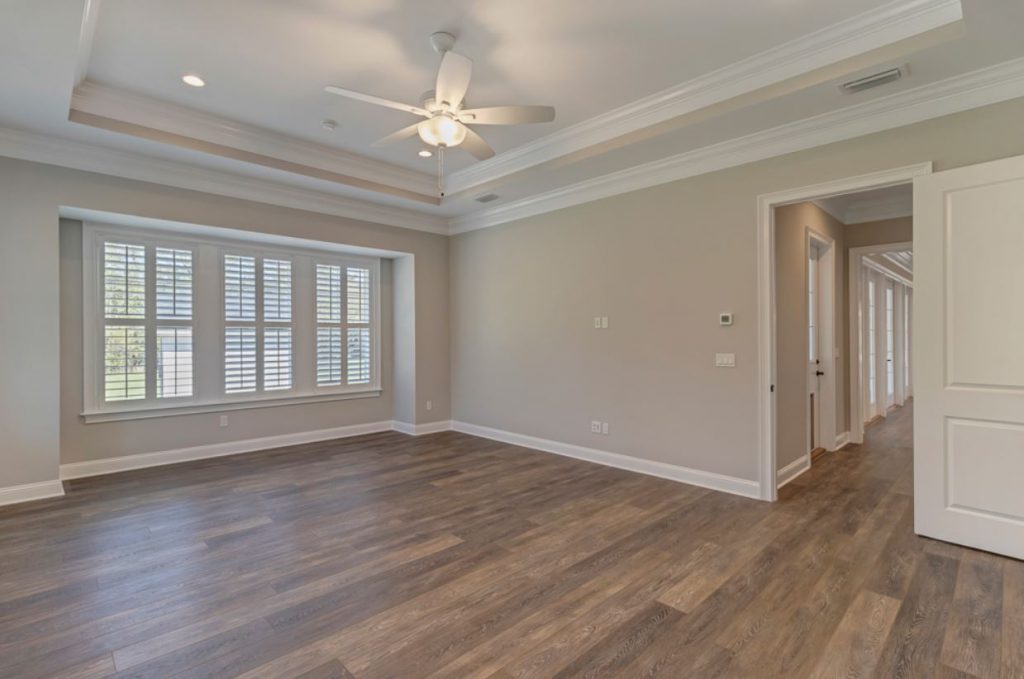Whether it’s building model trains or creating intricate quilts, many of us have a hobby we love to lose ourselves in whenever we have spare time. One of the biggest benefits of building a custom home is the ability to make each space precisely suited to you, and a room dedicated to your favorite hobby should be no different. Read on for 9 essential tips for planning for your new hobby room.
- Additional circuits
Think about the equipment you may want to use in your new space. If you have a large number that you would use at the same time, or a high powered item that draws a lot of amps, adding an additional circuit or two for these specific items is a must.
- Additional outlets
While every room is going to have outlets on each wall, for a Hobby Room, you might need additional outlets. Think about the items you want to utilize and be sure you have enough outlets to leave them plugged in. Next, consider any areas where you might want to have a desk or workspace. Adding outlets in the wall at the appropriate height gives you more flexibility and eliminates the need for extension cords. Even the ceiling might be a good place to include an outlet or two, depending on the type of equipment you use for your hobby.
- Floor outlet
Most people include a floor outlet in their family room, as our open-concept homes require most of our furniture to be floating in the room. However, if you think you might use a table or an island in the middle of your hobby room, having a floor outlet makes life much easier. This avoids the need to run cords back to the wall and create a potential trip hazard.
- Built-in closet shelving
A Hobby Room closet gives you a great place to keep all your items easily accessible behind closed doors. To make the most of this space, consider adding prefinished built-in shelving that is customized to your specific closet and storage needs. Adjustable shelving gives you the flexibility to expand or rearrange as your collection grows. You can even add drawers for storing even more items!

- Natural Light
Having plenty of natural light in your craft space is important for detail work. Most bedrooms will have at least one window already, but doubling this to 2 windows side by side adds tremendous natural light. If your room has an additional exterior wall, think through your layout and, if possible, add windows to that wall as well. Transom windows installed higher in a wall might be a perfect solution if you need all the available wall space for storage and/or desk space. These windows are typically between 12-18″ tall and are placed high up on the wall, allowing in the light but preserving your space.

- Additional ceiling lights
Along with natural light, having plenty of LED lighting in your hobby room is also important, so you can work away into the night. Recessed can lighting along the edge of the room floods your workspace with light. If you have any display areas planned, installing an art light or track lighting puts a spotlight where you need it. Small fandeliers combine the cooling power of a fan with lighting and may be a good option to place over your workspace.
- Built-in storage
When it comes to our hobbies, most of us have quite the collection of tools, parts, supplies, and finished projects that need to be organized and stored. Adding tall cabinets gives you a second storage closet in the room, and is the perfect way to store albums, equipment, paper or other large items. Wall cabinets or floating shelves above your workspace give you easy access to items you use regularly, all the while keeping your desktop free. You might even want to add under cabinet/shelf lighting here to eliminate the need for a desk lamp for detail work. Creating a desk with base cabinetry allows you to customize the storage for exactly what you need. Consider also adding an island in the center of your room for a 4 sided workspace. You can add drawers, rollouts or open or closed storage to fit all of your supplies right where you need them. An organized space where everything has a place frees up your time to work on your hobby rather than search for supplies.
- Heat and water resistant countertop
Some hobbies involve a tool or tools that generate heat. Whether it’s a glue gun or a heat press, having a place in your room where you can use these tools right on the countertop makes things much easier. Granite is the most heat resistant choice and is also very easy to clean and extremely difficult to scratch. While quartz is the most popular countertop choice, it cannot sustain hot items, so if you do choose quartz be sure to have trivets out for your hot tools. If your hobby involves using water or you need a place to dry your items, these solid surface tops are a perfect choice as well. There is no worry of damage from spills, and any paint that might get on them is wiped right off.

- Proper flooring
Perhaps the most important element to planning your perfect Hobby Room is to make sure you have the right flooring in the space. Carpet easily stains, and can also be hard to clean up threads, powders, and other hobby debris. If you stand the majority of the time you work in your room, a rubber floor cushions your knees and gives you a longer period to work. If your hobby includes a lot of paints, consider a Luxury Vinyl Plank (LVP) or large format tile floor. These will be easy to wipe up and using large tiles cuts down on the grout joints that are harder to clean. For tile floors, upgrading to UltraColor grout gives you a pre-sealed grout that is resistant to stains and cleans well. LVP and tile are also water-resistant, making them an excellent choice for most hobby rooms.


